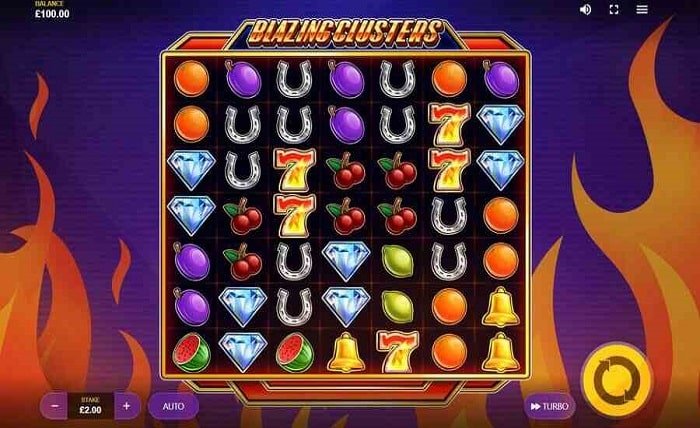Understanding RTP in Games Designed For Cluster Payback
First of all, let me clarify what RTP stands for generally before delving into how it is calculated in cluster pays games. Theoretically calculated, RTP also known as Return to Player determines the proportion of total wagers a game will pay out to participants over time. For example, an RTP of 96% indicates that over a long period the game will theoretically pay back $96 for every $100 wagerolled.
The mechanics of how victories are triggered vary greatly in cluster pays games from more conventional systems. Rather than requiring players to match symbols across a payline, these slot games reward players when groups of adjacent matching symbols usually known as “clusters” appear anywhere on the screen. These clusters can have different sizes; the reward increases with increasing cluster connectivity of symbols.
Although RTP is a major determinant of the payback value of a game, it is computed across millions of spins rather than a short sample of playtime. RTP thus shows long-term patterns and probability whereas a player may see changes in the outcome over brief sessions.
RTP Factors Cluster Pay Games
In cluster pays games, several elements affect the RTP determination. Players that wish to maximize their gaming experience must first understand these elements. Let us dissect the main components in this approach that help to determine RTP:
One of the key factors in cluster pays games is the cluster size that sets off a reward. Games might have different minimum cluster sizes; some might call for as few as four symbols in a cluster, while others might demand seven or more. The payment is more the bigger the cluster is.
Another element influencing RTP is the way symbols are spread over the grid. While some games follow a more ordered pattern, others have symbols randomly distributed. The volatility of the game might influence the formation of clusters of symbols and, hence, eventually the frequency with which players can attain bigger clusters.
RTP in cluster pays games can also be impacted by bonus features such as multipliers, free spins, or unique symbols. Many times, these characteristics offer chances for more payouts or improved gaming experiences. A multiplier symbol might raise the value of a payment from a cluster, for instance, or a wild symbol might enlarge clusters, therefore raising the probability of bigger gains.
Certain cluster pays games also use cascading reels, whereby winning clusters are taken off the grid to let fresh symbols fall into place. This can present players with more chances to win more with every spin, so supporting the RTP overall.
Still another crucial consideration is a game’s unpredictability. Low volatility games pay out smaller, more consistent amounts; high volatility games have the possibility for bigger, less frequent rewards. Usually, the RTP is computed such that the general game volatility is taken into consideration. Games with high volatility could have a lower RTP in some cases since they often pay out more seldom but could have bigger potential benefits if they do.
One should be able to differentiate actual RTP from theoretical RTP. Theoretically, the RTP is the percentage computed depending on the design and algorithm of the game. Usually promoted by developers, this is the figure showing the long-term predicted return. Conversely, actual RTP is the true payout percentage a player might get over a smaller period. Although theoretical RTP helps one to grasp the possibilities of a game, actual results can vary greatly in the near future.
RTP Calculation In Cluster Pay Games: Methodology
Though with certain unique variations, RTP in cluster pays games is computed similarly to other game forms. The following is a detailed guide on how RTP is usually computed in various games:
Payout Cluster Identification
Determining all the possible clusters that could show up on the grid comes first in computing RTP for a cluster pays game. The design of the game will determine whether clusters need a minimum number of matching symbols (e.g., 4, 5, or more), and so, the payoff value of these clusters may change depending on the size of the cluster and the type of symbol.
Game Mathematical Model
To replicate how often clusters will show over many spins, game creators apply a mathematical model. This model considers elements such the grid’s symbol count, cluster size, and any extra bonus features like wilds or multiplier values. These considerations subsequently help to assign the reward for every cluster.
Long-Term Calculating Of Return
Developers run millions of spins using the game’s mechanics to estimate the long-term projected return once the likely clusters and payouts have been decided upon. The RTP is computed by dividing the overall pay out over these simulated spins by the entire amount bet.
Including Variation And Volatility
Like other gaming systems, the RTP in cluster pays games also considers the volatility of the game. Although rewards in a game with high variance will swing more, over time it still usually returns a fixed percentage of wagers. The RTP computation guarantees that, over many spins, the game will pay out within the predicted range and considers these fluctuations.
For Players, What Is RTP?
Although RTP is a helpful tool for players to grasp the theoretical return of a game, it should be applied with perspective. RTP shows long-term patterns, hence individual outcomes can differ greatly in the near term. A game’s advertised high RTP does not ensure that a player will get those returns over one session.
Knowing the RTP of a game, however, might enable gamers to choose which games to play with greater knowledge. Though other elements like extra features, volatility, and gameplay mechanics should also be taken into consideration when choosing a game to play, games with higher RTPs usually offer superior long-term value.

